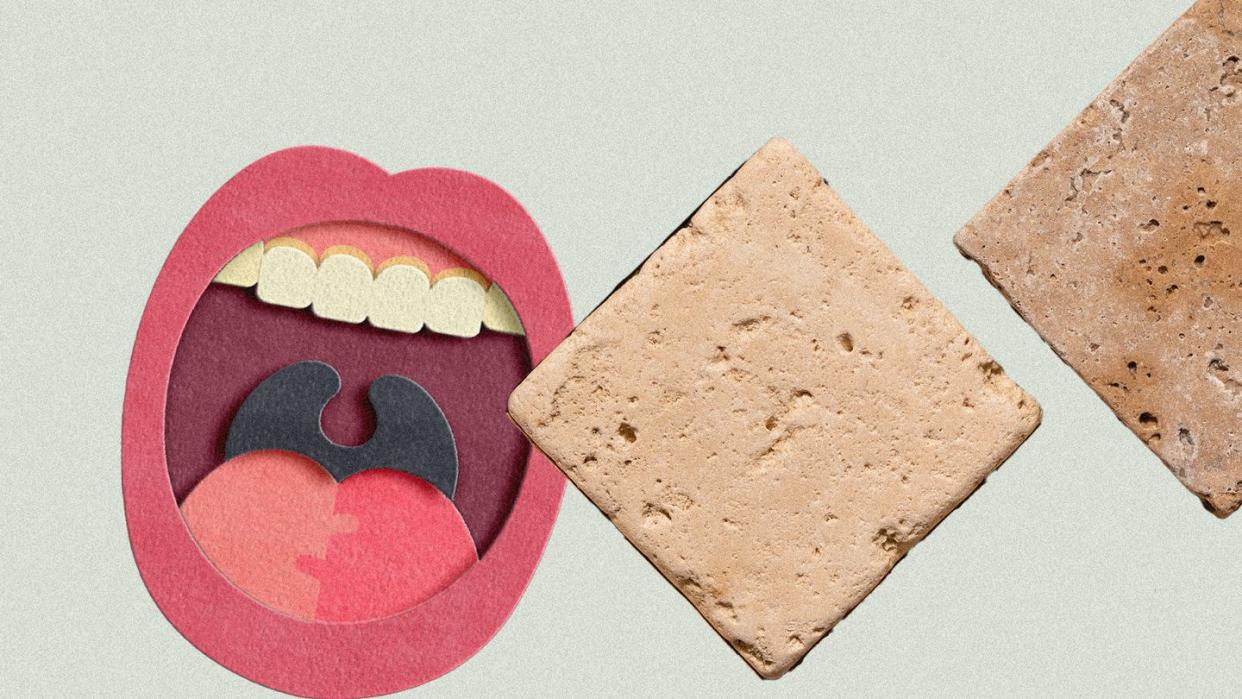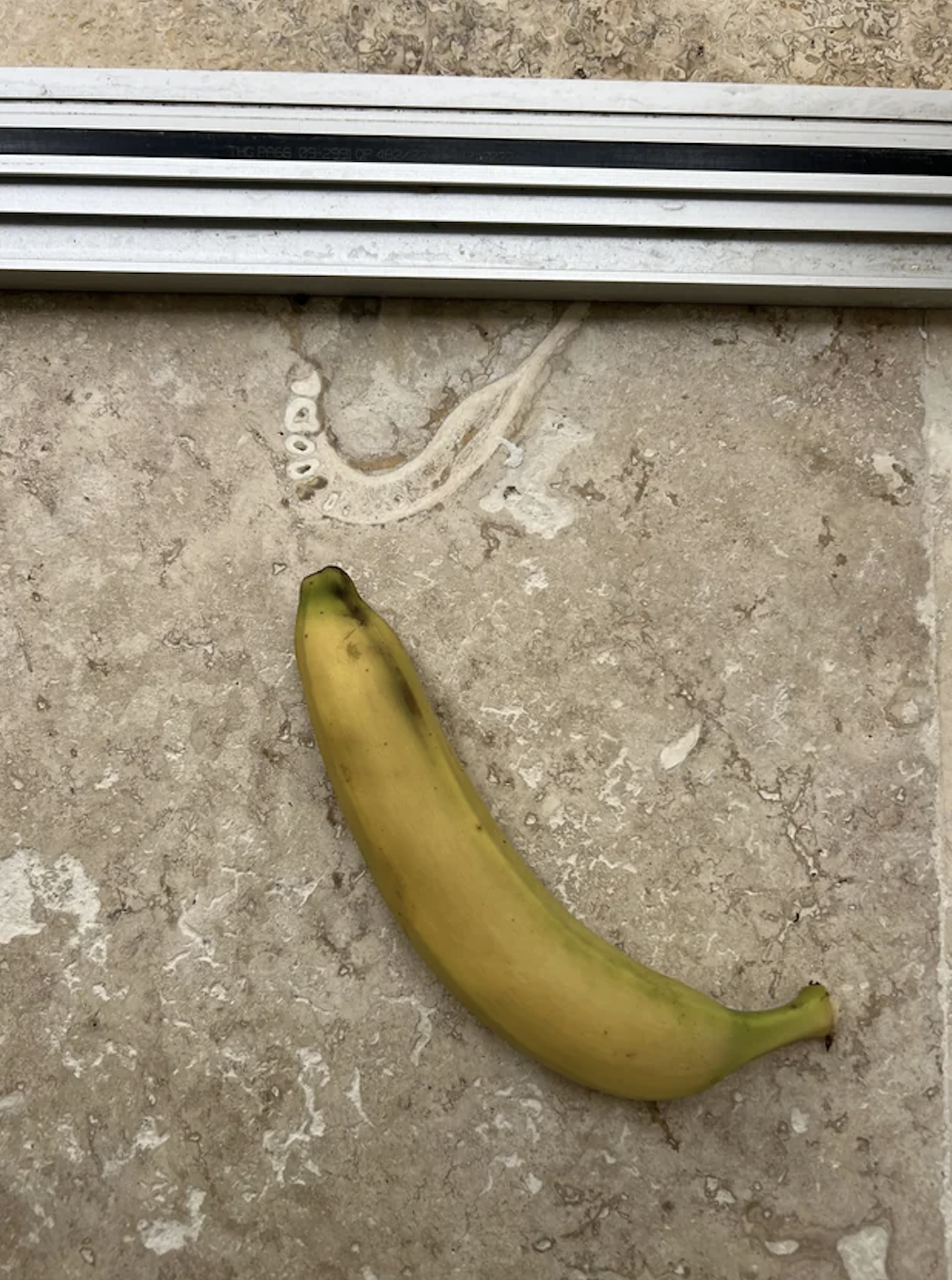This Dentist Just Found a Human Fossil in His Travertine Floor

"Hearst Magazines and Yahoo may earn commission or revenue on some items through these links."
As both design lovers and history buffs, we at House Beautiful have seen our fair share of interior quirks, like hidden passageways, secret rooms, and even an entirely separate apartment boarded up behind walls. But there’s one thing we hadn't seen—until now: a literal human fossil.
Last week, a dentist with the username u/Kidipadeli75 posted to the r/fossils forum on Reddit to ask about a crescent-shaped mark he found on his parents’ recently installed travertine tile floor. They had recently had finished a renovation project in their European home that involved replacing the flooring with travertine stone that had been quarried in Turkey. Having looked at hundreds of dental X-rays over the years, the user recognized something that looked too similar for comfort. The mark, not dissimilar to a bite mark, turned out to be an actual fossilized human jaw. You read that right: a human mandible, slightly smaller than a banana.

“This looks like a section of the mandible,” the user wrote. “Could it be a hominid? Is it usual?” To answer his question, no, it’s definitely not usual. While animal remains, particularly shell and bone fossils, are very commonly found in quarried rock and cut stone, it’s rare for human bones to be there, let alone be so identifiable.
A few commenters laughed it off, stating “a literal jaw dropper,” and “The Mandifloorian” (a pun on the popular Star Wars universe show The Mandalorian on Disney+). However, a few were as intrigued as we were and offered some valuable professional insights.
“Dentist with forensic odontology training here: This is a hominid mandible, almost certainly human,” explains a dentist on the forum. “While all old world monkeys, apes, and hominids share the same dental formula, 2-1-2-3, and the individual molars and premolars can look similar, the specific spacing in the mandible itself is very specifically and characteristically human, or at least related and very recent hominid relative/ancestor.”
Does Travertine Tile Usually Have These…Irregularities?
Well, travertine is a rustic stone, but this is no doubt an extreme example of the texture people love so much about it. It's a popular material for indoor and and outdoor walls and floors as well as furniture like sculptural coffee and accent tables, which makes it easy to forget how ancient and unique it really is. According to The Natural Stone Institute, “The travertine-forming process can happen anywhere that combines hot water and limestone.” It continues on to explain that a layer of 300-foot thick travertine likely began forming 200,000 years ago. (If you think that sounds old, granite of the same thickness would be a thousand or even ten thousand times older.)
Given the relatively recent introduction of humans in the history of the world, these fossils are still rare finds. A forensic nurse with a degree in evolutionary biology estimated on the Reddit forum that the fossil is likely around 200,000 years old, however, there’s no real way of knowing that without a professional examination.
But back to the flooring. Fortunately or unfortunately (depending on how you look at it) these homeowners plan to excavate that piece of travertine tile to have it properly examined by archeological professionals. It's yet another reminder to double check your construction materials before they’re professionally installed.
Follow House Beautiful on Instagram and TikTok.
You Might Also Like
